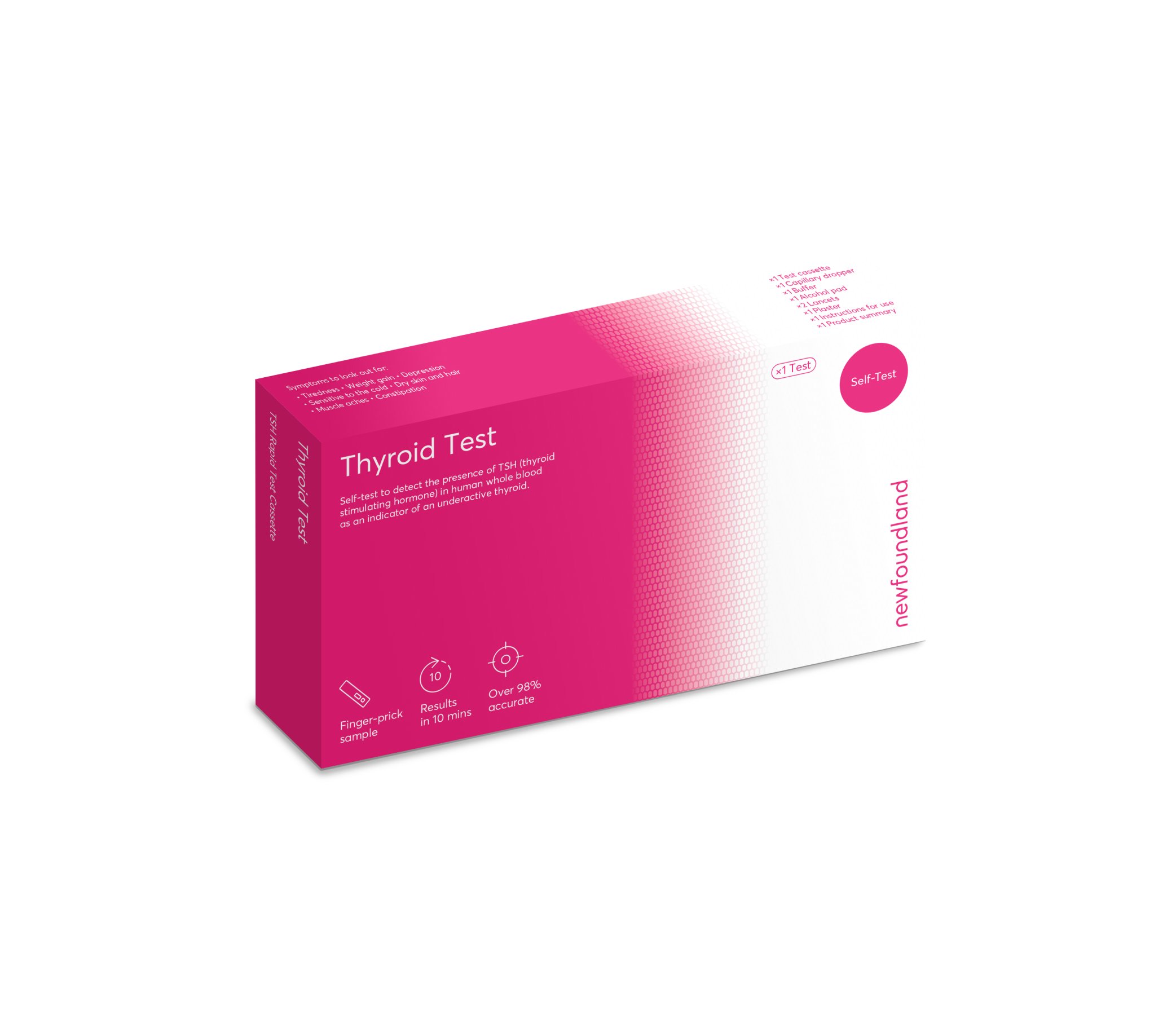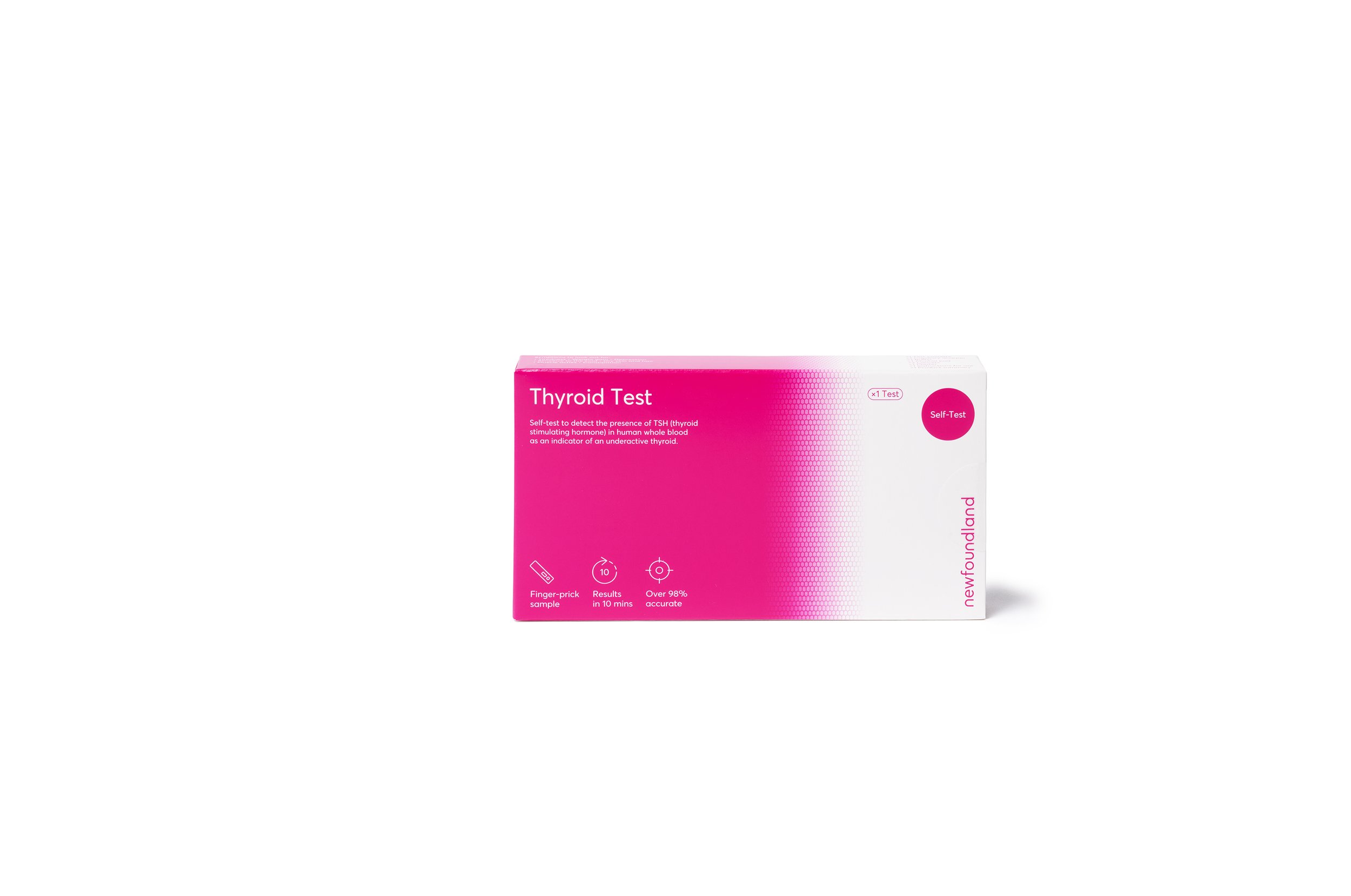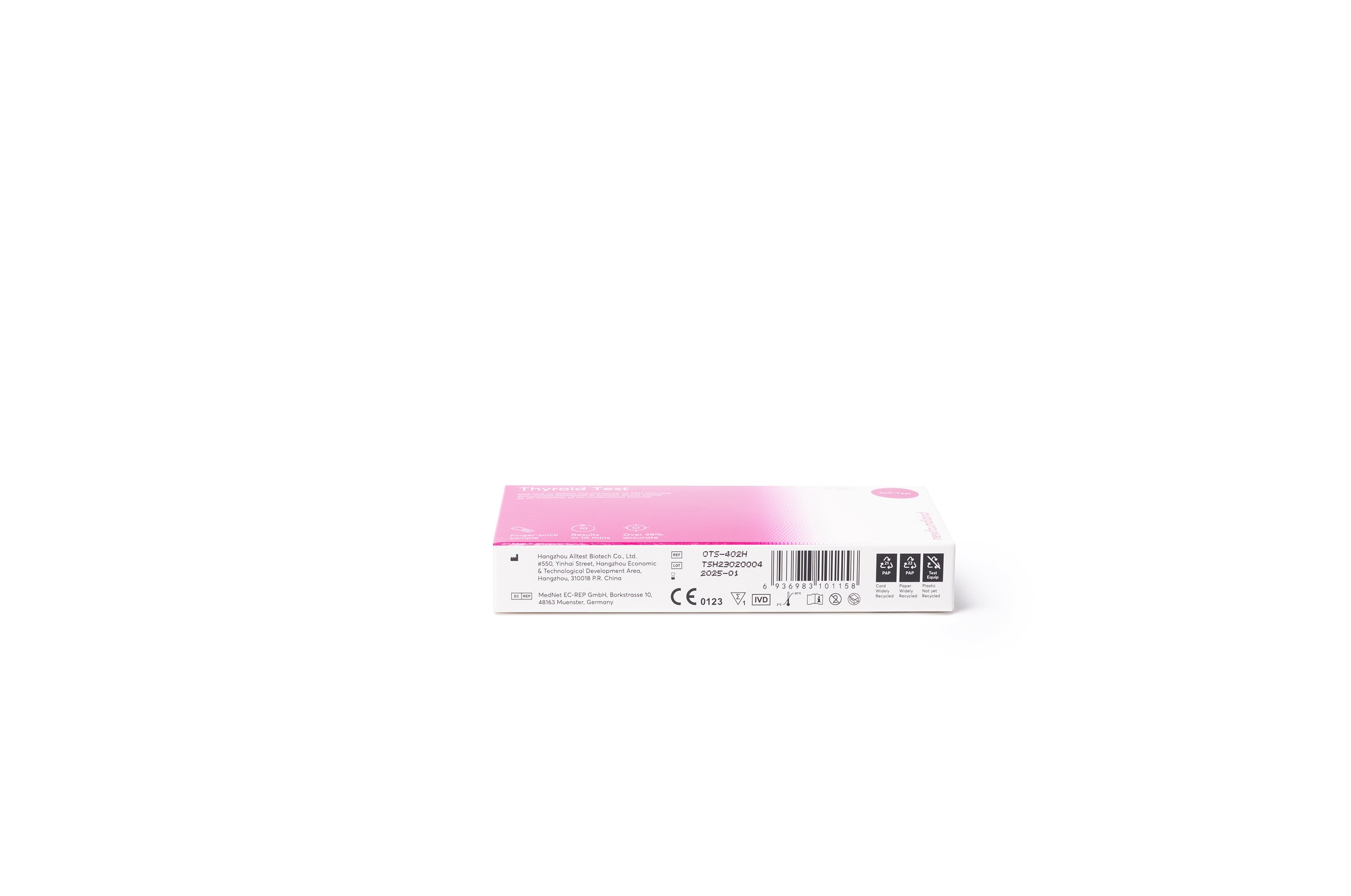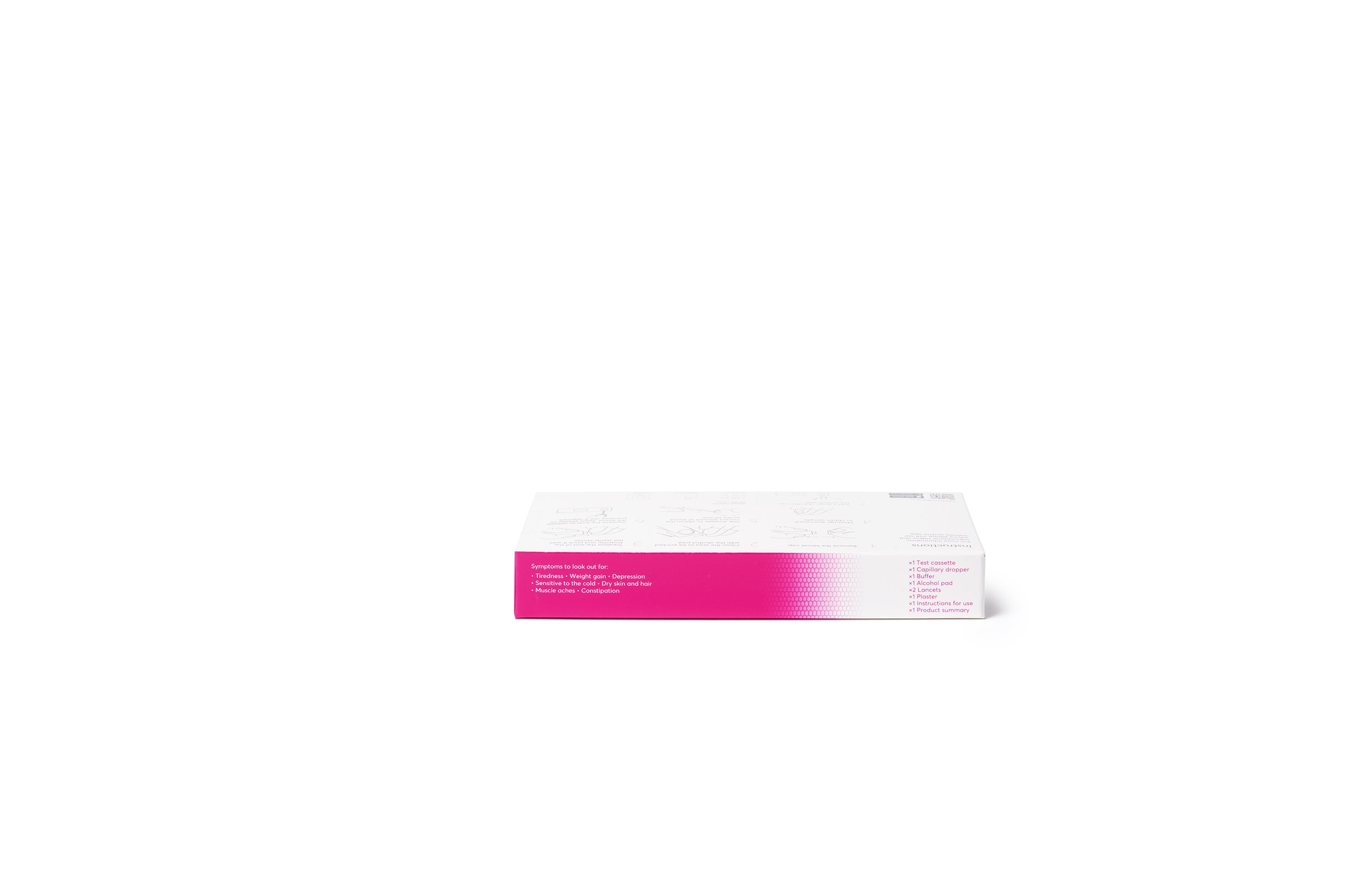Thyroid
TSH Rapid Test Cassette
A rapid self-test for the detection of human thyroid stimulating hormone (TSH) in whole blood to help diagnose an under-active thyroid.
1 test per pack.
Accuracy
98.2%
Certifications
CE self-test | MHRA
Specimen
Blood
Self-test
-
The Thyroid test is a rapid test that qualitatively detects the presence of TSH (thyroid stimulating hormone) in whole blood specimens at the sensitivity of 5μlU/ml, utilising a combination of monoclonal antibodies to selectively detect elevated levels of TSH in whole blood.
Thyroid stimulating hormone (also known as thyrotropin, thyrotropic hormone, TSH, or hTSH for human TSH) is a pituitary hormone that stimulates the thyroid gland to produce thyroxine (T4), and then triiodothyronine (T3) which stimulates the metabolism of almost every tissue in the body.
Testing of TSH levels in the blood is considered the best initial test for hypothyroidism. It is important to note, as stated by the Subclinical Thyroid Disease Consensus Panel, “there is no single level of TSH at which clinical action is always either indicated or contraindicated.” The higher the TSH, the more compelling is the rationale for treatment. It is important to consider the individual clinical context (e.g. pregnancy, lipid profile, ATPO antibodies).
-
Procedure
1. Wash your hands with soap and rinse with clean, warm water.
2. Bring the pouch to room temperature before opening it. Open the foil pouch and remove the cassette.
3. Carefully pull off and dispose of the cap of the lancet.
4. Use the provided alcohol pad to clean the fingertip of the middle or ring finger as the puncture site.
5. Press the lancet, on the side from where the cap was extracted; against the fingertip (side of ring finger is advised). The tip retracts automatically and safely after use.
6. Keeping the hand pointing downwards, massage toward the end of the finger that was pricked to obtain a blood drop.
7. Without squeezing the capillary dropper bulb, place it in contact with the blood. The blood migrates into the capillary dropper to the line indicated on the capillary dropper. You may need to massage your finger again to obtain more blood if the line is not reached. Avoid air bubbles.
8. Put the blood collected into the sample well of the cassette, by squeezing on the dropper bulb.
9. Wait for the blood to be totally dispensed in the well. Unscrew the cap of the buffer bottle and add 2 drops of buffer into the sample well of the cassette.
10. Wait for the coloured line(s) to appear. Read results at 10 minutes. Do not interpret the result after 20 minutes.
-
Read results at 10 minutes. Do not interpret the result after 20 minutes.
POSITIVE: Two lines appear. Both T (test) and C (control) line appear. This result means that the TSH level is higher than the normal (5μIU/mL) and that you should consult a physician.
NEGATIVE: One line appears. Only control line appears (C). This result means that the TSH level is not in the range to consider hypothyroidism.
INVALID: Control line fails to appear. Insufficient specimen volume or incorrect procedural techniques are the most likely reasons for control line failure. Review the procedure and repeat the test with a new test. If the problem persists, discontinue using the test kit immediately and contact your local distributor.













